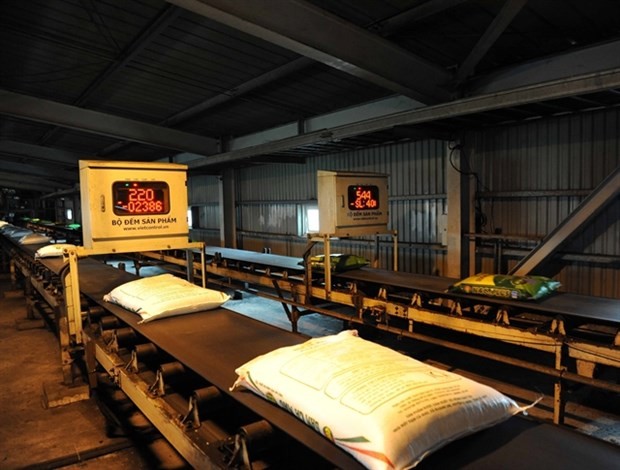
High exports but challenges ahead for fertilizer industry
Latest
As organic agriculture has begun to gain traction in the world, organic fertilizer exports reached 2.91 million tonnes last year, up 14% year-by-year. The number of organic fertilizer factories hit 468, four times as high as the number in 2017.
However, high exports are only part of the story. In fact, Vietnam imported 3.44 million tonnes of fertilizers last year as some types of fertilizers could not be produced domestically. Of the imports, 0.46 million tonnes are organic and 3 million tonnes are non-organic.
The Ministry of Agriculture and Rural Development revealed that there were 792 fertilizer factories in the country in 2022, 112 factories lower than the figure in 2021.
The ministry remarked that the mounting prices of fertilizers in 2022 were pushing up agricultural costs, driving many farmers into unprofitability.
 |
| A fertilizer production line of the Petro Vietnam Ca Mau Fertilizer JSC. (Photo: VNA) |
Specifically, fertilizer costs increased from around 25% of their total costs to roughly 50%, surpassing the rise in their revenues. Substandard fertilizers added to their woes by causing damage to their crops.
As such, the Vietnam Fertilizer Association (VFA) urged domestic fertilizer producers to invest further in advanced technologies to improve efficiency and cut costs, which would reduce fertilizer prices to the relief of farmers.
"Production should be distributed equally between non-organic and organic fertilizers as the latter has become a trend globally," added Nguyen Tri Ngoc, VFA deputy director.
The International Fertilizer Association (IFA) had three scenarios for the global fertilizer market in 2023.
Under the worst-case scenario, global fertilizer demand would fall in 2023 and stand at 194.6 million tonnes in 2026. Under the midpoint scenario, global demand would reach 201.1 million tonnes in the next three years. Under the best-case scenario, the figure is adjusted to 211.1 million tonnes.
Fertilizer prices, meanwhile, are not likely to drop in 2023 under all three scenarios.
Over the past 50 years, global fertilizers witnessed three booms in prices, one between 1973-1974, one between 2007-2008, and one from 2021 until now.
The recent boom in fertilizer prices was triggered by the balloon in prices of natural gas, which accounts for about over 70% of fertilizer production costs. Some factories which were unable to transfer higher costs to higher fertilizer prices have been left with no choice but to shut down.
The Russia-Ukraine conflict fuelled the situation by causing global supply chain disruptions. Specifically, Russia has suspended its fertilizer exports to cater to domestic demand. The suspension will remain in effect until May 2023.





















